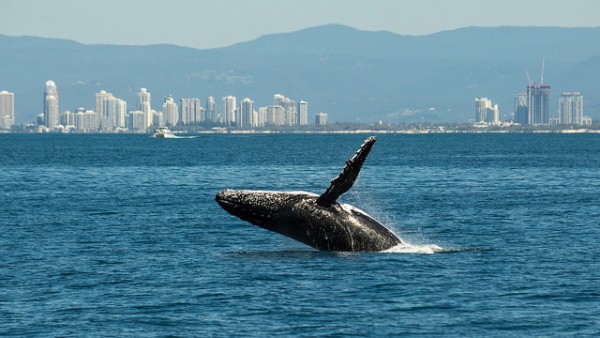By April Kirstin Chua, | March 17, 2017

Humpback Whales Form 'Super Groups’ Due to Population Recovery
Scientists spot almost 200 humpback whales at a time gathering off in South Africa. Reports claim the bizarre behavior of these loner species due to population recovery as they feast on a variety of prey in the southern spring and early summer.
Researchers from different organizations have collaborated to study the recent activity of the humpback whales, who are normally seen at the same time each year off the southwest coast of South Africa to the north of Cape Town. Study leader Ken Findlay, a marine biologist at Cape Peninsula University of Technology in Cape Town of South Africa, says the behavior is unlike anything he has seen.
Like Us on Facebook
"These are animals that normally are in groups of up to maybe three of four. To see 200 together in an area the size of a football field is remarkable," he said in a statement as reported by the National Geographic. The timing and location of the "super groups" are astonishing since humpbacks only visit the cold waters of South Africa during the winter months, where they migrate to feed.
Notably, a total of 30 "super groups" containing between 20 to 200 whales were counted in October or November during 2011 to 2015. Although the team of scientists doesn't exactly know of the reason why the Southern hemisphere humpback whales are swarming off the continent, they have some theories.
According to the study published in the journal PLOS ONE, the humpbacks were observed hunting - diving and lunging in the water to feast on a variety of prey. "Either the availability of prey has changed or the behavior of the whales has changed," Findlay said. This corroborates the findings that the humpback whales have decided to stay in the southern waters to feed instead of migrating north.
The team suggests the observed behavior be a restoration of a previously unobserved feeding strategy as the population abundance of the humpbacks re-establish. No further information was reported about what the whales are feeding on but researchers say mantis shrimp may be their primary prey.
Another theory would be that the species is booming and scientists are noticing normal behaviors that weren't previously seen from the lonely whales due to low numbers. During the 19th and 20th centuries, humpback whale populations reduced by nearly 90 percent because of commercialization. At one point, fewer than 2,000 whales likely remained on Earth.
The International Whaling Commission officially banned whaling in 1966 and the Endangered Species Act protected humpback whales in 1973. Currently, the International Union for Conservation of Nature proudly and positively claims of the humpbacks' population as they continue to grow with as many as 60,000 animals as of writing. Researchers plan to continue the study of their sudden mysterious swarms and formations.
-
Use of Coronavirus Pandemic Drones Raises Privacy Concerns: Drones Spread Fear, Local Officials Say

-
Coronavirus Hampers The Delivery Of Lockheed Martin F-35 Stealth Fighters For 2020

-
Instagram Speeds Up Plans to Add Account Memorialization Feature Due to COVID-19 Deaths

-
NASA: Perseverance Plans to Bring 'Mars Rock' to Earth in 2031

-
600 Dead And 3,000 In The Hospital as Iranians Believed Drinking High-Concentrations of Alcohol Can Cure The Coronavirus

-
600 Dead And 3,000 In The Hospital as Iranians Believed Drinking High-Concentrations of Alcohol Can Cure The Coronavirus

-
COVID-19: Doctors, Nurses Use Virtual Reality to Learn New Skills in Treating Coronavirus Patients










